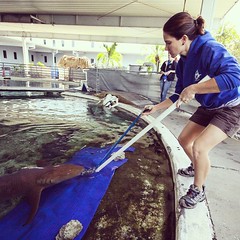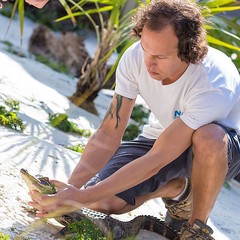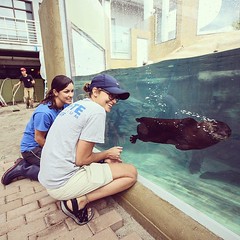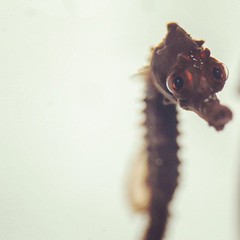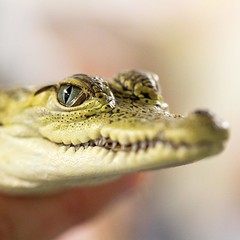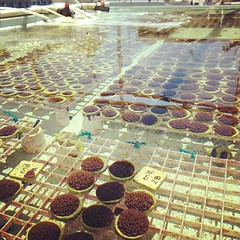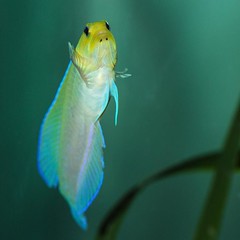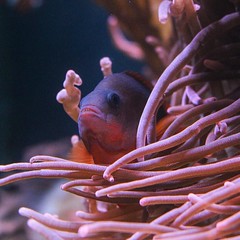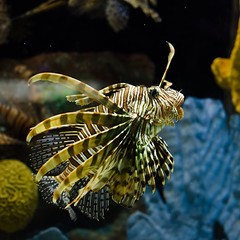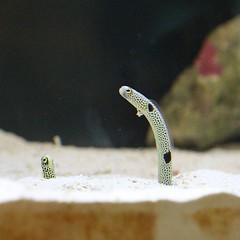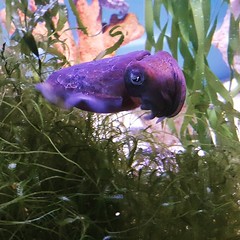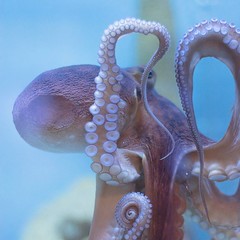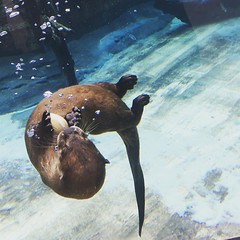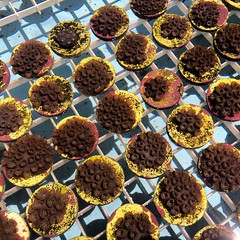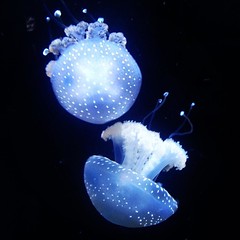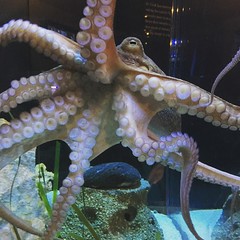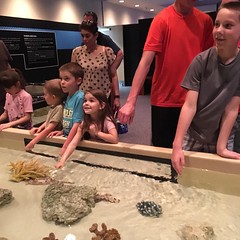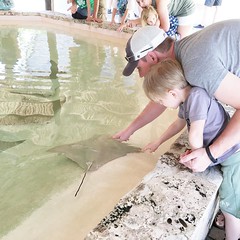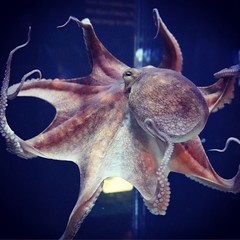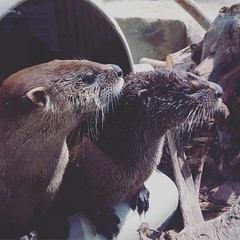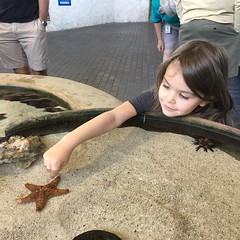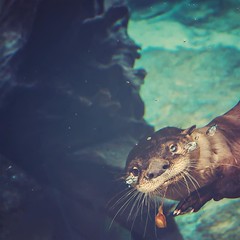1600 Ken Thompson Parkway
Sarasota, FL 34236
Ph: (941) 388-4441
Hours: 10AM - 5PM
A 501(c)3 nonprofit organization.
JV
Kemp's ridley (Lepidochelys kempii)
(ST11065, Johnny Vasco da Gama)
| Age Class | Juvenile |
| Gender | Unknown |
| Date Stranded | October 31, 2008 |
| Location of Stranding | Netherlands |
| Date of Arrival | November 28, 2011 |
| Number of Days of Care | 764 days |
Final Disposition
Released from Lido Beach into the Gulf of Mexico

JV at Zoomarine in Portugal
11/29 An endangered sea turtle rehabilitated in Portugal after stranding in the Netherlands — thousands of miles from its home waters — arrived this morning at Mote Marine Laboratory — its last stop before caregivers return it to the wild.
This turtle's incredible journey is the result of an international team effort by the theme park Zoomarine in Portugal, the Florida Fish and Wildlife Conservation Commission (FWC), the National Oceanic and Atmospheric Administration’s National Marine Fisheries Service, The U.S. Embassy in Portugal, the Portuguese airline TAP, and Mote Marine Laboratory.
The Kemp’s ridley turtle was rescued in November 2008 in the Netherlands, where it probably drifted on ocean currents after becoming “cold-stunned” by cold water, which can shut down sea turtles’ body functions and even cause their deaths. The turtle was stabilized by the Rotterdam Zoo in the Netherlands and sent to the aquarium Oceanário de Lisboa in Portugal the following summer, and was immediately transferred to Zoomarine for rehab.
Zoomarine staff identified the turtle as a juvenile Kemp's ridley — a highly endangered species that spends this part of its life feeding in relatively shallow, warm waters of the western North Atlantic, particularly in the Gulf of Mexico, which is thousands of miles from where it was rescued. To return the turtle to optimum habitat, Zoomarine staff worked with NOAA Fisheries Service, FWC, and Mote to obtain special import and export permits and arrange for the turtle's journey to Florida.
The turtle's travels earned it the nickname "Johnny Vasco da Gama" for the Portuguese explorer Vasco da Gama, who opened the sea route from Europe to India. The turtle was named "Johnny" in the Netherlands and gained its explorer name in Portugal.
Johnny flew to Miami accompanied by Zoomarine staff thanks to the Portuguese airline, TAP, which donated transport for the turtle and its caregivers and even went to great expense to temporarily adapt the cabin of its plane to accommodate the animal. FWC and NOAA Fisheries Service staff received the turtle in Miami and FWC drove JV to Mote’s Sea Turtle Rehabilitation Hospital this morning. Mote caretakers gave JV a medical exam and are providing a temporary home until the turtle is medically cleared for release in Southwest Florida.
12/27: Netherlands-Stranded Sea Turtle Returned to the Wild; Mote Scientists will Track Satellite-Tagged Turtle's Journey Home

Scientists and caregivers from Mote Marine Laboratory returned an endangered Kemp's ridley sea turtle to the wild on Tuesday following the animal's incredible 4,600-mile journey back to the Gulf of Mexico. Dozens of well-wishers on hand at Lido Beach to see the turtle off.
The turtle, an endangered Kemp’s ridley nicknamed “Johnny Vasco da Gama,” was found stranded in 2008 in the Netherlands and rehabilitated in Portugal. The turtle was brought to Sarasota on Nov. 29 to complete its recovery at Mote’s Sea Turtle Rehabilitation Hospital and to be outfitted with a state-of-the-art satellite tracking system by Mote’s Sea Turtle Conservation and Research Program.
The satellite tag allows scientists with the ability to determine the success of the turtle’s rehabilitation upon its return to its natural environment, said said Dr. Tony Tucker, leader of Mote’s Sea Turtle Conservation and Research Program. Tucker, a Florida Marine Turtle Permitholder, coordinates Mote’s sea turtle research and satellite tagging efforts and is a member of the IUCN Marine Turtle Specialist Group, an internationally recognized body that works for the conservation of marine turtles.
“Rehabilitation success can be judged by the turtle resuming normal behavior upon return to the wild,” Tucker said. "Since we have an ongoing tagging program with Kemp's ridleys in Charlotte Harbor, that also will give us something to compare this turtle's behavior to."
Mote has tracked more than 120 sea turtles since 2005 and is one of the few Florida facilities with permission to satellite tag and track turtles that have been rehabiliated following an injury or illness. Johnny’s satellite tag was supplied by Wildlife Computers and will reveal the turtle's whereabouts as it re-orients to its breeding and feeding grounds in the Gulf of Mexico.
Because turtles use the Earth's magnetic field to navigate — and commonly travel hundreds of miles between the places where they breed and the places where they feed — Johnny is expected to find its way home with relative ease. “By tracking Johnny, we’ll obtain a rare look at how rehabbed turtles reorient in the wild,” Tucker said.
“The most exciting part of Johnny’s journey is yet to come,” said Sheryan Epperly, Sea Turtle Program Lead from the Southeast Fisheries Science Center of NOAA’s National Marine Fisheries Service. “Tracking will help to define the turtle’s movement patterns which will then give us a better understanding of habitat use.”
